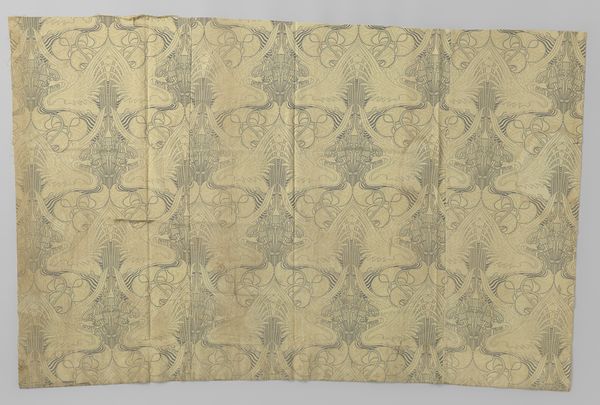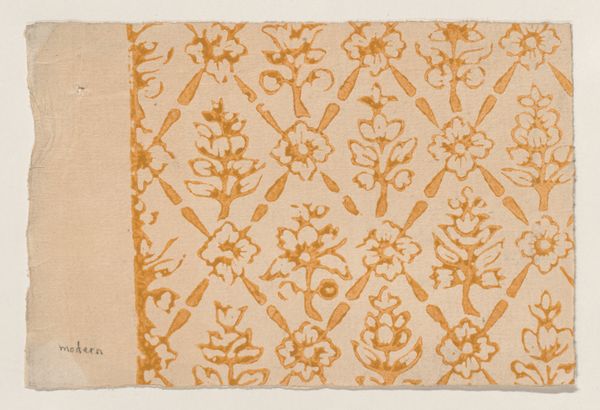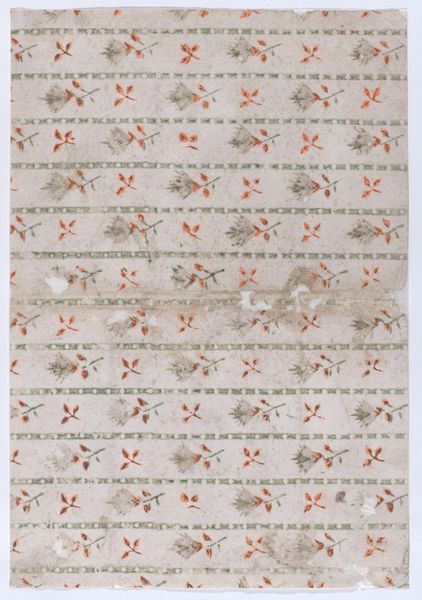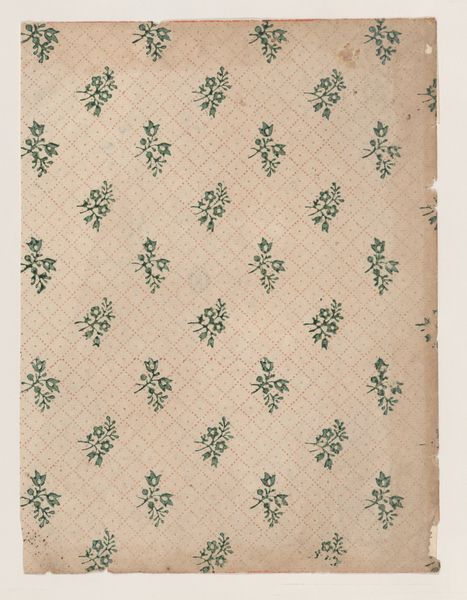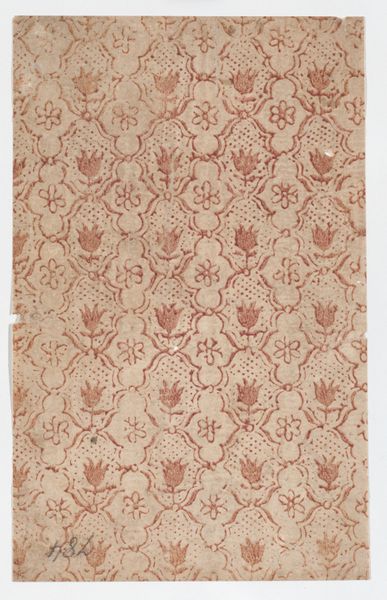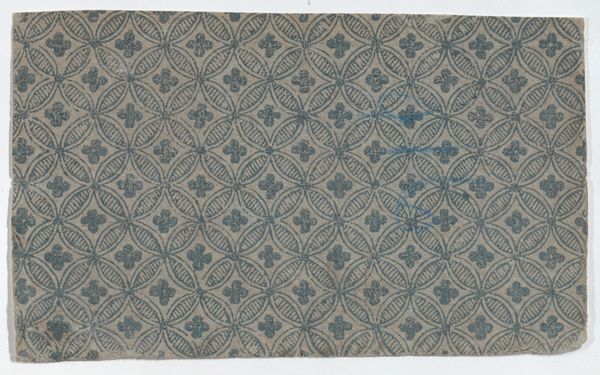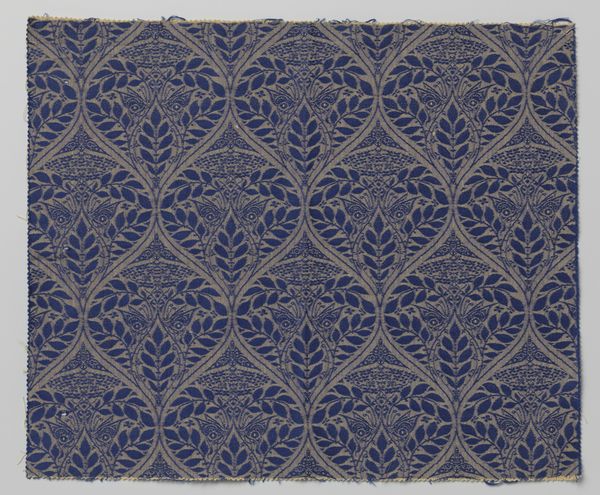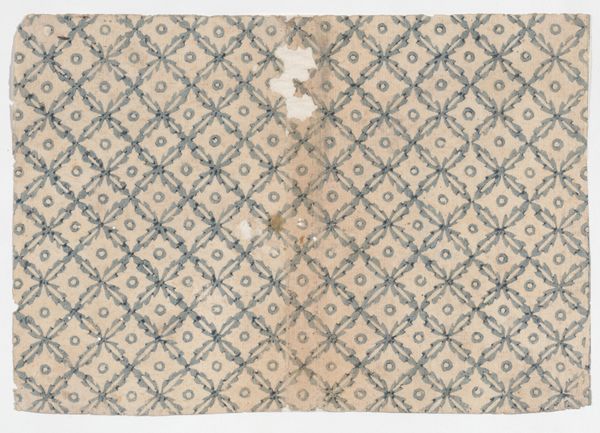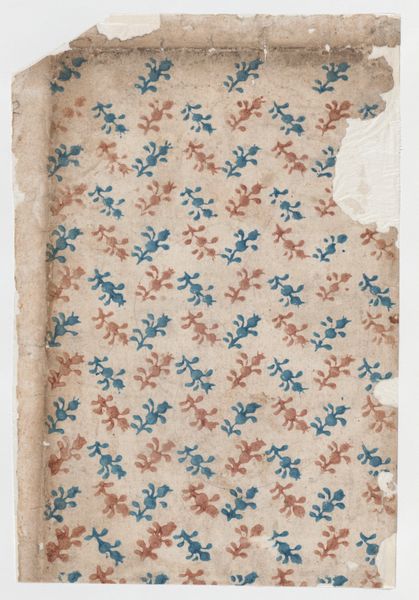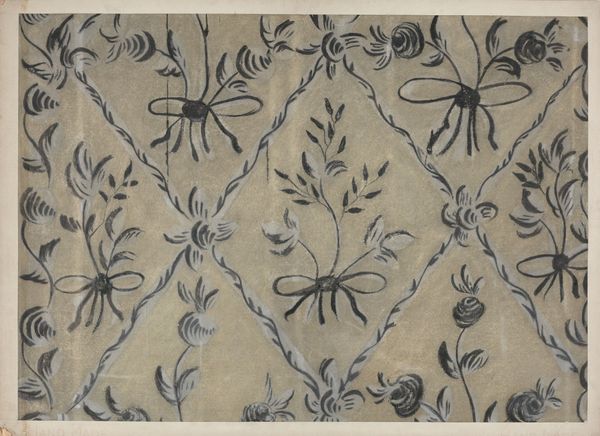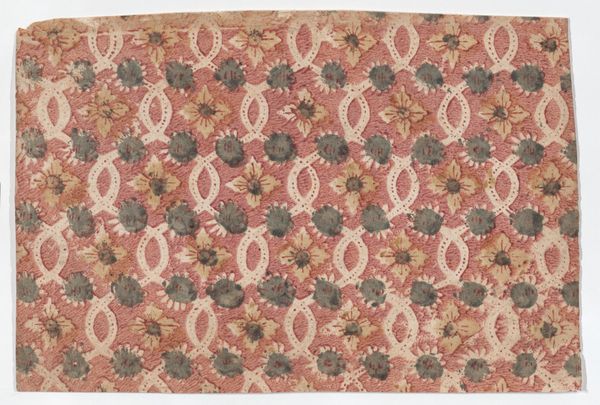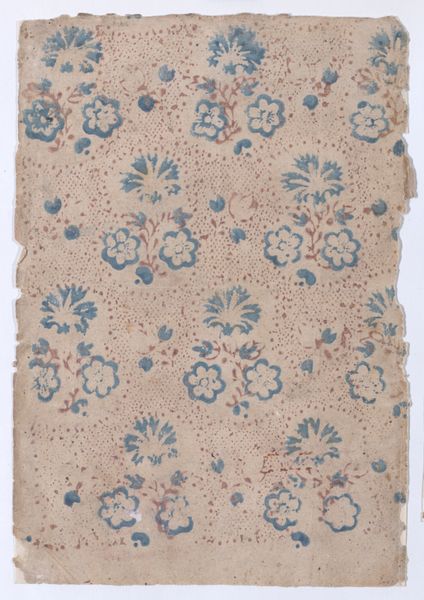
drawing, graphic-art, print, textile
#
drawing
#
graphic-art
# print
#
pattern
#
textile
#
decorative-art
Dimensions: Sheet: 9 1/8 × 12 5/16 in. (23.2 × 31.3 cm)
Copyright: Public Domain
Curator: Here we have a drawing dating roughly from 1775 to 1875, residing here at The Metropolitan Museum of Art. It is called "Sheet with overall dot and floral pattern." Editor: It's incredibly delicate. A light ground sprinkled with darker details, very quiet in its tonality. What strikes me first is the meticulous arrangement—almost hypnotic in its repetition. Curator: Yes, the anonymous artist seems quite interested in design. The artwork itself is graphic art made from print and it appears to be designed for a textile pattern. Note the floral stripes undulating across the page and the smaller, interspersed leaf designs—all framed by an expansive field of dots. There is an abundance of these works in the decorative art realm. Editor: You can see how this design was likely meant to translate onto fabric. Look at the use of negative space and repetition—there's an emphasis on continuity that speaks directly to textile design. The small details make for visual complexity. Curator: Indeed. When viewing decorative art like this we must ask what purposes these objects fulfilled in their cultural context. I suspect something about status and luxury, and these forms invoke ideas of nature but they are stylized, contained, manageable. Editor: Exactly. And the very act of repetition carries meaning. Each tiny element is not precious, but rather part of the larger unit. Think how that connects to societal ideas around labor, industry, or class structures during its period. The floral motifs bring nature into this system as if it's to be arranged or structured just so. Curator: Considering its function as a pattern, the piece’s design might convey social standing and values, showing not just decorative skill, but a perspective about how the natural world is seen. The dotted background alone, repeated infinitely across yards of fabric, speaks volumes. Editor: Yes. It prompts reflection on art, mass production, and how visual culture permeates daily life. Curator: Reflecting upon the imagery—decorative patterning takes on dimensions of not only societal class, but value and production, truly altering your appreciation of the artwork. Editor: It’s interesting to view something initially "simple" and unravel it in this way, no? It truly highlights how formal analysis uncovers depth where there appeared to be none.
Comments
No comments
Be the first to comment and join the conversation on the ultimate creative platform.
